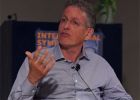Philosophical Knowledge Transfers in György Galántai’s Art Archival Practice and Its Relationship with the Work of Vilém Flusser, Arthur Koestler and Michael Polanyi
This essay explores the intellectual context of the “Active Archive” of Artpool, founded in Budapest in 1979, by György Galántai and Júlia Klaniczay. Galántai’s thinking and creative approach are embodied in the system itself, which calls for an archival practice based on transfers of philosophical and personal knowledge. The archive puts the philosophical, insights of some influential thinkers into practice, among them Arthur Koestler, Vilém Flusser and Michael Polanyi. In archival research, one can gain a better self-awareness through the exploration of the social and cultural relations of the past. The contents available in the Artpool Archive, predetermine a particular way of seeing things by structuring them and at the same time they constantly offer freedom of choice, both necessary in our present day telematic society, deeply permeated by digital and artificial intelligence.
Von der telematischen Gesellschaft zur retrotopischen Stammesgemeinschaft: Zbigniew Libera’s Film Walser (2015)
This essay uses Vilém Flusser’s reflections on the medium of video to examine the work of the Polish visual artist Zbigniew Libera focusing on his latest film Walser (2015), his first and only feature film for cinemas. The film is set in a post-apocalyptic age. Only one tribe has survived which lives peacefully and harmonically with nature at the margins of civilization. One day, a stranger visits it. The aim of the essay is to explore the portrayal of the tensions between individual and collective in the film in order to reconstruct Libera’s idea of a community based on the principle of dialogue, an idea that can be compared to Flusser’s own vision of the future and his theories of cultural history. In the last part of the essay I try to interpret Libera’s deconstructionist approach using Zygmunt Bauman’s concept of retrotopia.
Postscript
Flussers In the Universe of Technical Images was published in 1985, and was part of a surge of speculative, science-fiction like books and films about the information age that was slowly but surely emerging. Related titles include William Gibsons Neuromancer (1984), Jean Baudrillards Fatal Strategies (1983), Paul Virilio’s Negative Horizon (1984), and James Camerons The Terminator (1984). In the book Flusser tries to speculatively come up with a set of concepts that would allow him to enter into the Universe of technical images that is slowly but surely coming about in the 1980’s. In Chapter 11 he makes a fundamental shift in his writing strategy, and decides to go beyond the philosophical project of inventing new concepts for new situations, and actually enter the Universe of Technical Images in order to become the future ‘telematic man’. The next 10 chapters are among the best ever written by Flusser and describe what he sees and experiences as telematic philosopher in UTI. He makes a distinction between traditional or handmade images, technical or machinic images and dialogical, digital images. This last category is interactive, democratic, open, divine, as is the corresponding telematic man.
Meaning and Agency in the Universe of Technical Images
This presentation is about the differences between traditional or handmade images, technical images made by apparatuses, and dialogical, interactive images. What Flusser called technical images we call analogue images. Digital images are understood by Flusser under the name of dialogical or interactive images. Flusser wasn’t yet able to make this clear distinction in 1985 when writing Into the Universe of Technical Images, but this is how both types of images developed since then.
Raising the Temperature of the Conversation in the 21st Century
The main goal of this presentation was to connect our wireless culture populated by “smart objects” and Flusser’s predictions for a telematics society, as well as to examine the inversions he envisioned in the exchanges between art and science. Seven artists have been included in the slide presentation: Eduardo Kac, a pioneer of Bio Art eroding boundaries between subject and object; Paul Miller, who creates sound pieces from scientific data; Laura Poitras’s documentary films and exhibition about surveillance and the use of remote technologies in war as well as Andrea Fraser’s institutional critique; Giselle Beiguelman articulating the concept of techno-cannibalism; Lucas Bambozzi exploring the invisibility of electronic waves, issues of obsolescence and waste; and the work of Cuban artist Ernesto Oroza’s notion of “technological disobedience”.
Cotton Wool. On Flusserian Methodology and Terminology
Flusser’s attempt to cross-fertilize the disciplines, to synthesize philosophy, art and science, relies on the use of hybrid multifocal terminology. This implies the use of different strategies: horizontal expansion through multiple successive translation, vertical segmentation through etymology, integration of conceptual opposites, crossbreeding between disciplinary areas, exploration of the phonetical and visual side of words, wordplay. Furthermore, these main strategies are not used on their own, but combined in different and always changing ways with each other. The borders of words are not fixed. They overlap, mix and merge. I would like to explore Flusser’s writing and thinking styles in order to approach and understand the challenges stemming from his idiosyncratic innovative methodology.
Há futuro para a tradução na sociedade pós-histórica? / Does Translation Have a Fu-ture in the Post-Historical Society?
Researchers studying Flusser’s work are faced with two apparently distinct periods: in the first period, while he lived in Brazil, Flusser developed his theory of language; in the second period, after his return to Europe, his theory of the media and post-historical society. In this paper, I intend to explore some of the connections between those two periods of Flusser’s thought, and point to some possible ways Flusser’s view on language and translation can be applied to his conception of post-historical society. Flusser's reflections suggesting that writing is coming to an end are analyzed here in an effort to identify the place occupied by translation in a world where history and writing are losing ground to technological images. In this context, this work emphasizes the crucial role assigned by Flusser to translation: that of building bridges, not only between different languages and cultures, but also between different fields and models of knowledge.
Between Representation and Projection: Music in Vilém Flusser’s Work
According to Vilém Flusser, music has a logical-mathematical structure that corresponds to the basis of human thought in general. “Pure music,” supposedly free of language in the strict sense, exemplifies this point. By being independent of representation and figuration, “pure music” reveals the development of Western thought, which Flusser would also theorize through the decoding of letters into numbers. For Flusser, the mathematical structure of thought represented by the concept of “pure music” also leads to the advent of machines and apparatus, similar to the way the decoding of words into numbers brings forth the abstraction of calculation. Computers, for instance, can project worlds onto the human senses with equally creative possibilities. The proximity between music and calculation allows for an understanding of music in contrast with musicological or historical approaches. In this sense, music is an element of Flusser's thought which anticipates some of his themes. Flusser's understanding of music as a mathematical concept independent of representation is further exemplified by his formulation of a telematic society based upon the model of chamber music.
Die zweite Unschuld: Heilsgeschichtliche und eschatologische Perspektiven im Werk Vilém Flussers und Marshall McLuhans
This paper deals with the possible relevance of eschatological and messianic perspectives in Vilém Flusser’s and Marshall McLuhan’s media theories. Both authors postulate a first stage from which media evolution sets out and a last stage to be reached with the development of new media such as television, film, and photography. McLuhan describes the global village as the result of a process of totalizing re-tribalization: it returns us to a ‘second orality’ under the auspices of the integrating forces of tactility. Flusser, on the other hand, conceives of the telematic society of the future as an attempt at synthesizing Jewish and Greek traditions: it reaches back to a previous unity by moving beyond it.
Vilém Flussers Sprache und Wirklichkeit von 1963 im Kontext seiner Medienphilosophie
Language and Reality (Língua e Realidade), written 1963 in Portuguese, is Vilém Flusser’s first publication on the subject of language. Communication as inter-subjective conversation is regarded here as the very form in which language lives up to itself. Already in this early phase of his Brazilian work – which so far has not been given the attention it deserves – future themes are present in an embryonic way. His reflections on electronic brains participating in a communication network, for instance, can be found again in the concept of a telematic information society. Flusser’s recourse to European language theories throws a rather unexpected light on his media and communication theory of the eighties and early nineties.



